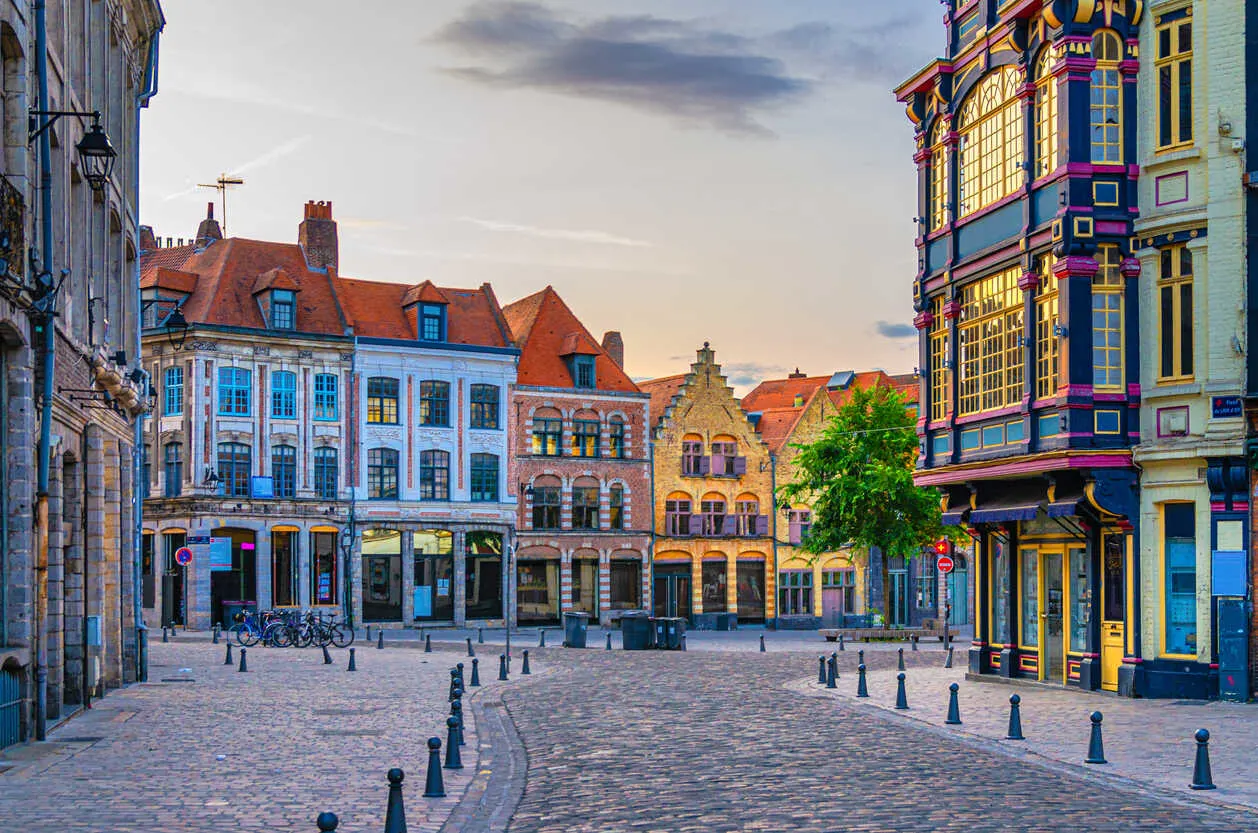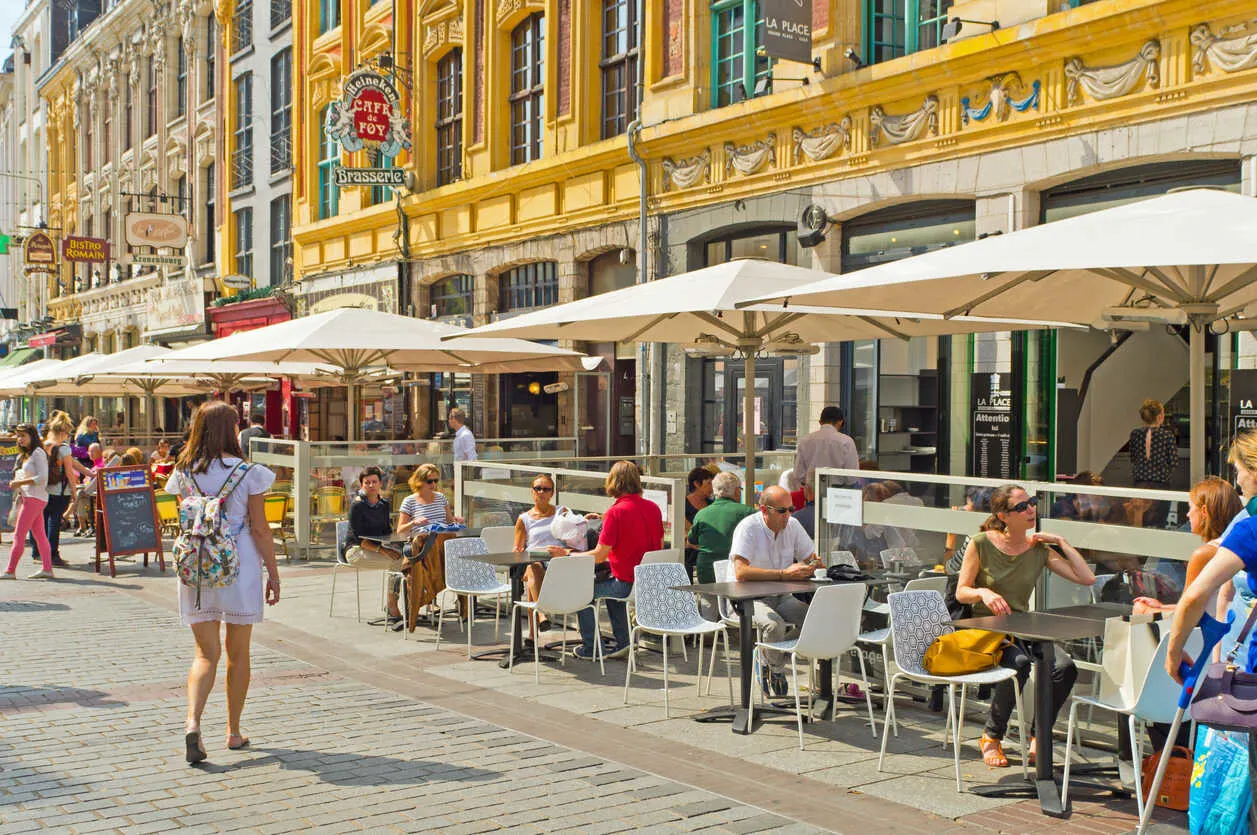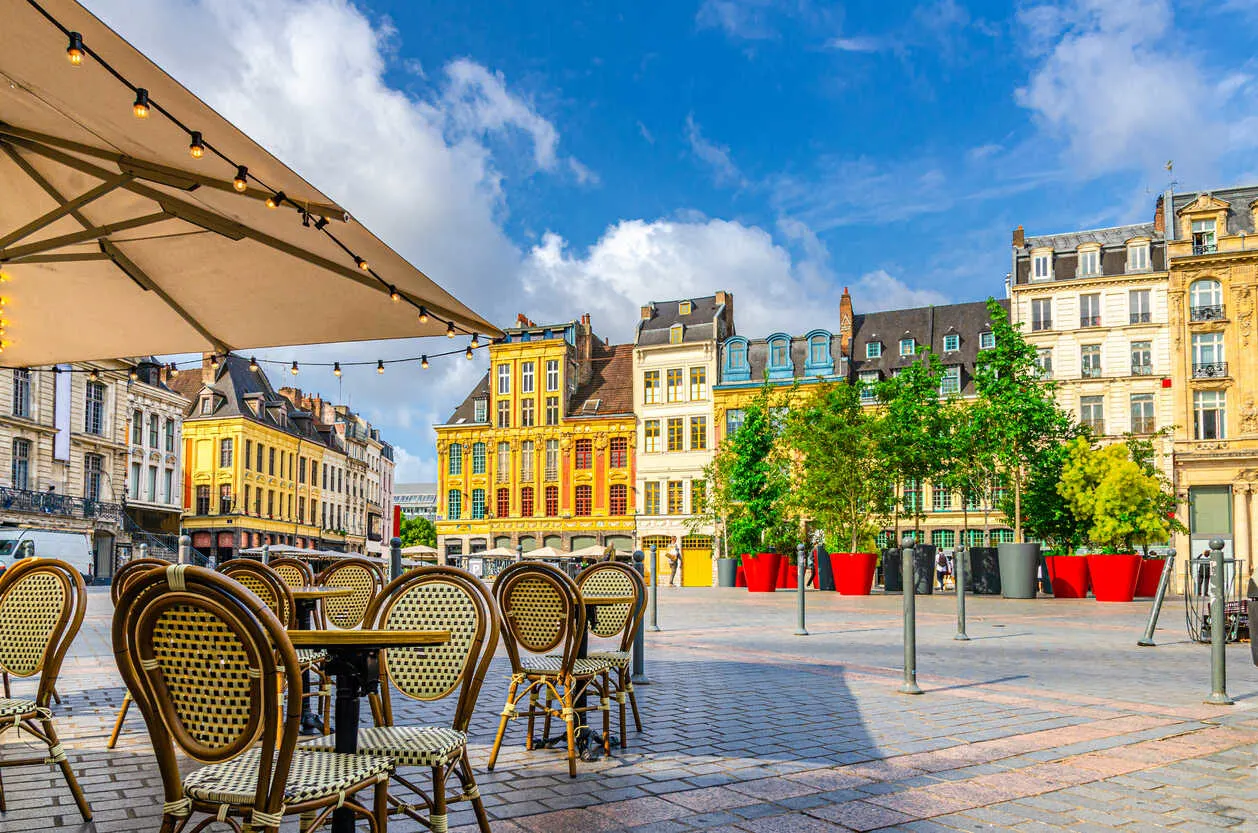We walked slowly along the banks of the canal, admiring the small, silvery ducks bopping up and down the mossy embankment. Swirling lily pads shifted from bright green to pale yellow and back again as the sun played peek-a-boo under a thin cloud cover.
A group of cyclists angled carefully around us, following the curved path of the canal as it disappeared under a towering canopy of sycamore trees.
Arms looped casually over handlebars, their tote bags were stuffed with picnic provisions for the day.
We crossed the path to what had initially drawn us to the elegant waterway in the first place… houseboats. A trio of them. Large, elegant, steel and wood-trimmed péniches—as they’re called here—that had been converted into French restaurants. Part bistro, part floating happy hour, the boats were already rockin’ and rollin’ at the advanced hour of 12 p.m. on a Sunday afternoon.
Pop music flowed from a houseboat called the Aristote, where I spotted a gentleman with a white and gold captain’s hat swaying to the music, a red bandana draped casually around his neck.
His "crew" was outfitted in white T-shirts with thin blue stripes, each with an artfully tied red bandana.
As the captain took a mock bow, a chorus of Joyeux Anniversaire rang out from the glass atrium that served as the houseboat’s main bar. Champagne flutes in hand, the group cheered loudly, bumping a few stools precariously close to the water’s edge.
A theme party! We’d stumbled upon a group of joyous French folks celebrating their best mate in the middle of Citadel Park in Lille.
I was enchanted. I’d expected a lot of things out of this architecturally renowned French city, but this cool, let-your-hair-down Sunday party in the middle of such a beautiful setting had taken us both by surprise.
My husband and I had driven cross-country from our home in Provence for a once-in-a-lifetime chance to watch Lebron James and his team in US Olympic basketball, as part of the Paris 2024 Games.
Although the magic of the Olympics had left us speechless, we’d soon discover that the oft-overlooked, unassuming city of Lille would be the real breakout star of our summer adventure.
Get Your Free France Report Here
Get Your Free France Report Here
Learn more about France and other countries in our daily postcard e-letter. Simply enter your email address below and we’ll send you a FREE REPORT: A Taste of France: All the Ingredients for the Good Life.

By submitting your email address, you will receive a free subscription to IL Postcards, Overseas Dream Home, The Untourist Daily and special offers from International Living and our affiliates. You can unsubscribe at any time, and we encourage you to read more about our Privacy Policy.
A Flemish Island in Northern France

At its founding—the first mention of the city dates to 1066—Lille was but one of several enclaves, or "islands," along the Deûle River in northern France. The area served as a central hub for transporting merchandise, with the waterway helping to develop trade in the region.
The island, l’île in French, gave birth to Lille.
Around 58 miles from the border with Belgium, Lille was strongly under Flemish influence and retained this cultural distinction despite undergoing a series of sieges starting in 1213—a total of 12 in all.
Changing hands between the French, Spanish, and Dutch before becoming French again, Lille’s historic center largely conserved its northern style of architecture—you can see it in the buildings that line the sumptuous Grand Place, renamed after the Second World War to Place du Général de Gaulle, in honor of Lille’s most famous son and war hero, Charles de Gaulle.
An important commercial trading site and a gathering spot for local festivals during the Middle Ages, the Grand Place houses Lille’s most emblematic monuments, rivaling the splendor of the Grand Place in Brussels.
Here the once wooden structures of medieval times have been replaced by brick and stone-sculpted façades typical of old towns in the Netherlands. Iconic buildings include the Vieille Bourse, an arcaded merchant’s square that now houses vintage booksellers, and the restored Furet de Nord, touted as one of the prettiest bookstores in all of Europe.
Directly behind the Vieille Bourse lies Lille’s Opera House. Designed in the same style as the Garnier Opera in Paris, the neoclassical structure underwent a complete renovation in 1998, reopening during the launch of Lille European Capital of Culture 2004. Today, it offers a varied programming of operas, concerts, and dance shows.
The real cultural star of the city, however, is located in the République/Beaux-Arts neighborhood, within the historic center. The Palais de Beaux-Arts is one of the biggest museums in France, and hosts the second largest French art collection after the Louvre in Paris.
After suffering significant damage and losses in the First and Second World Wars, Lille rebuilt its infrastructure to become one of France’s principal urban communities—thanks in large part to the construction of the Lille-Paris freeway in 1968. (Within the city limits, or intra-muros, Lille is the 10th most populated city in France, with around 240,000 residents.)
Further improvements in transportation, including the Lille-Lesquin airport and the TGV Lille-Europe rail station, contributed to the city’s growth. From the modern Euralille neighborhood, residents can take the Eurostar to London in an hour and twenty minutes. Residents also enjoy easy access to Paris—the drive between the two cities takes around 2.5 hours.
Lagers, Beef-Fat Fries, and the Friendliest People in France

"Cheerful, welcoming… a city that knows how to be happy." If you ask the French— especially those lucky souls living along the sun-drenched Côte d’Azur—about life in Lille, this is the description you’re likely to hear (relayed with just a twinge of envy).
While folks in the fabled south of France are spoiled with beautiful weather and captivating Mediterranean vistas, it’s commonly agreed that the north far outshines the south in one key livability factor: friendliness.
In a recent Nice-Matin newspaper article, French transplants to the Côte d’Azur were asked about the friendliness of the different regions, and le Nord came up on top each time. "In the north, they don’t have cliques, just people," said one newly-minted resident.
"People who are nice, welcoming, and friendly," said another.
Lille, for us, was absolutely that and more. A breath of fresh air in terms of welcome and hospitality. We were in town at the height of the Olympic Games, where many hotels were completely sold out and the city was experiencing a huge influx of international tourists. But you’d never have known it.
At every turn, we were greeted with welcoming smiles and excellent service— by hotel, transportation and restaurant staff, and residents alike.
My husband and I were barely seated on the houseboat Aristote in Citadel Park when a French woman at the next table struck up a conversation.
"Where are you from?" she asked with a warm smile, "We’ve heard so many different languages today, with all the tourists in town."
I had to quickly glance over my shoulder to make sure that Madame was, in fact, speaking to us. While often on the receiving end of a bonjour or a bon appétit in southern France, I was hard-pressed to remember ever having a conversation with a fellow diner. We embraced it.
During our lunch, we learned that Madame was a French retiree and native of Lille. Having seen several major changes over the years—namely the city moving from a simple "stopover" to an actual travel destination—she was thrilled that the Olympics had come to town.
"You must come back for the braderie," she said, referencing the Grande Braderie de Lille, an immense, city-wide antiques fair held every September that’s touted as the largest flea market in all of Europe.
As I was finishing off my speculoos (gingerbread) tiramisu, Madame’s lunch companion, her daughter, became our impromptu tour guide.
"You’ll want to head to the Grand Place, and then there’s a bus tour that leaves from the tourist office at 4 p.m. if you’re interested. I’m not sure if you have to reserve in advance," she said, checking her cell phone to confirm the details. "You can rent bikes here on the canal, or just walk to the historic center if you like. It’s about ten minutes away."
We did just that. Strolling the sumptuous corridors of the Grand Place, peering in at the vintage booksellers at the Vieille Bourse, and finishing with Belgian-style fries (cooked in beef fat, which adds a delicate, flaky crispness) and a traditional carbonade or Flemish stew at the estaminet (bistro), Au Vieux de la Vieille.
The Perfect Place for a French Debut

"I personally think that Lille is the perfect place for people who are moving to France for the first time, especially for those who aren’t yet fluent in French," says Jennifer L. Ziegelmayer. A half-British, half-American university professor, Jennifer lived most of her life in the US—born and raised in the suburbs of Boston—before calling Lille home.
Jennifer fell in love with France during a high school trip to Paris and dreamed of retiring here. After earning a PhD in Management Information Systems at the University of Mississippi, she taught for a while in Mississippi and at the University of Qatar before accepting a position at the IESEG School of Management, a business school with campuses in Lille and Paris-La Défense.
Jennifer has been working in Lille for the past eight years, and plans to spend her retirement between her apartment here and a condo she owns in Northern Virginia.
In Jennifer’s view, the city’s sizable international community—from local universities and international companies based in Lille—helps facilitate the transition to France. An abundance of language-exchange opportunities and social meetups are available for newcomers.
All in all, it was the friendliness of the residents that really won her heart.
"It’s easy to start conversations with locals, and there are many clubs and associations that you can join," she says. "They will smile and try to help you if you are struggling with the language. They are not as ‘proper’ as the people of other regions."
She also says not to let the weather be a deal-breaker for you.
"There’s a stereotype that it rains constantly in le Nord, but it isn’t true," says Jennifer. "The weather in this department is quite nice for those who like moderate temperatures. Summers are bright and sunny, and there are only about two weeks during which I turn on the air conditioner," she adds.
"In the winter, I have to admit, it is grey and drizzly, but it never gets too cold. As Lille is situated between Paris, London, and Brussels, the weather is certainly no worse than it is in any of those cities!"
Given the logistical advantages, relatively low cost of living, and friendly and welcoming atmosphere, Jennifer says she highly recommends Lille to expats looking to move to France.
"There’s a song that says: Les gens du Nord ont dans le coeur le soleil qu’ils n’ont pas dehors," she tells me. "It means ‘People from the north have the sun in their hearts that they don’t have outside.’ And it’s true!"
Get Your Free France Report Here
Get Your Free France Report Here
Learn more about France and other countries in our daily postcard e-letter. Simply enter your email address below and we’ll send you a FREE REPORT: A Taste of France: All the Ingredients for the Good Life.

By submitting your email address, you will receive a free subscription to IL Postcards, Overseas Dream Home, The Untourist Daily and special offers from International Living and our affiliates. You can unsubscribe at any time, and we encourage you to read more about our Privacy Policy.
